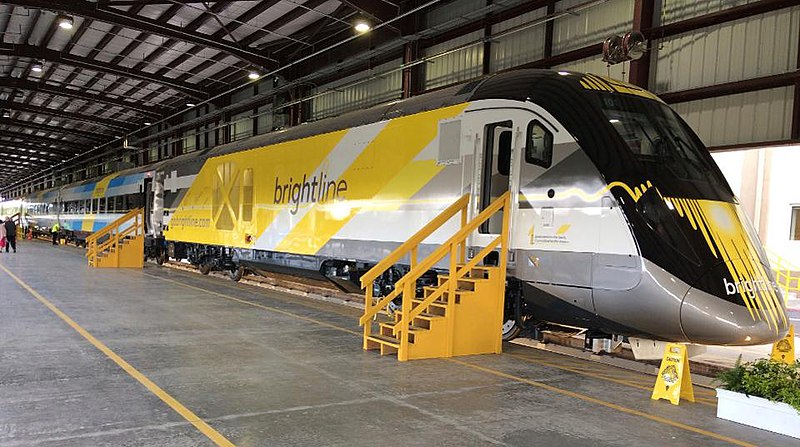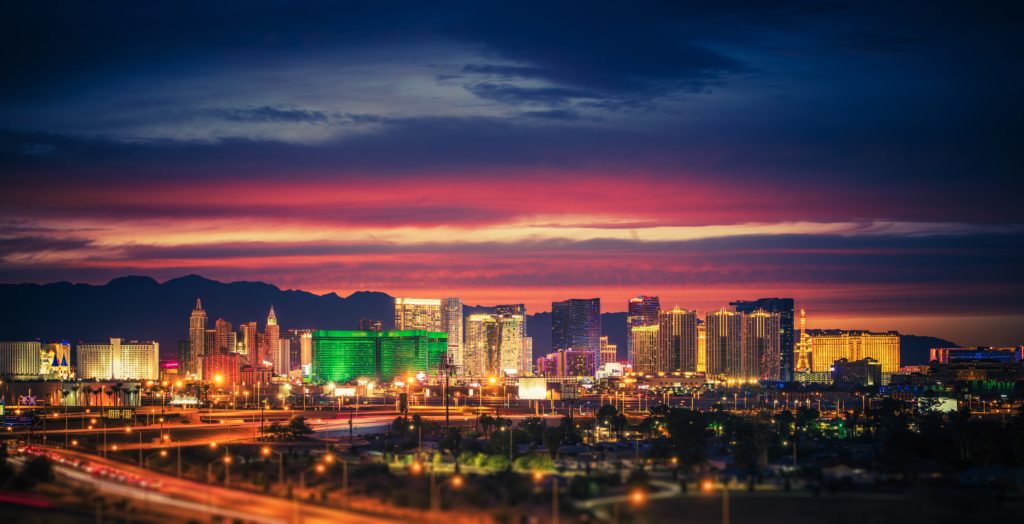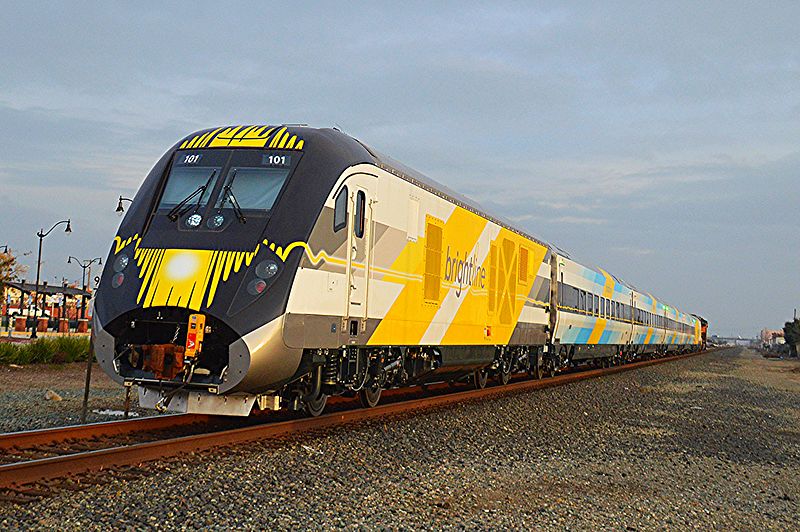Featured image credit: Dom Blevins
We’re mere months away from construction on a bullet train that will stretch from Rancho Cucamonga to Las Vegas. Forecasts are even more optimistic after Brightline, the company behind the ambitious project, signed contracts with a coalition of reputable labor unions. Eventually, the Brightline rail will connect to LA’s existing Metrolink service. But for now, focus is purely fixed on bringing the Rancho Cucamonga to Las Vegas bullet train to reality.
Mapping a Quick Course to Vegas
The train is scheduled to originate in a new station being constructed in Rancho Cucamonga. From there, it will hit stations in Apple Valley and Hesperia/Victorville before continuing straight onward to the Las Vegas Strip. With an expected completion date of 2027, the project is demanding a $10 billion investment, but also estimates an equal financial return.
Since Brightline will be relying on an electric rail, the bullet train from Rancho Cucamonga to Las Vegas will achieve speeds of just under 200 miles per hour. With stops included, the full run is expected to take about two hours.
On the Fast Track to Completion
While many of California’s transit projects take longer than originally estimated, Brightline’s bullet train is expected to move much more quickly. Since most of it will be constructed in the already existing median of I-15, the project bypasses land acquisition snags that so often hinder rail expansions in the Golden State.

Another factor Brightline has on its side is its union advantage. By contracting with the High-Speed Rail Labor Coalition, they’ll be employing the combined efforts of 13 rail unions. This compensates for over 160,000 trained workers exhibiting expertise in a variety of rail types including freight, commuter, and passenger. And with plans to issue around 12 million one-way tickets a year, they’ll need every bit of that skill.
A Greener Commute
Brightline is also taking a more eco-friendly approach to their project, promising an emission-free commute. With the allure of a 2-hour, no-stress straight shot to Vegas, the new line is aiming to eliminate approximately 3 million automobile trips a year.
Not only will this ease I-15 congestion. It could reduce CO2 emissions by as much as 400,000 tons!
Earlier this year, CalTrans made the deal even more environmentally sound. They’ve agreed to construct nature crossings over the tracks and I-15 to better preserve area wildlife. The nature crossings will also serve to keep the project moving forward, avoiding environmental snags.

Thousands of Opportunities for Employment
Then, there are the employment opportunities that the Rancho Cucamonga to Las Vegas line will bring to the table. During the construction phase, the project will create around 35,000 jobs. And when the dust settles? Over 1,000 jobs will remain as permanent positions.
Rancho Cucamonga to Las Vegas is Just the Beginning
Brightline has vowed to keep their line compatible with California’s other high-speed rails so the lines can join in the future. A starter segment is even tentatively scheduled to coincide with the 2028 Olympics in Los Angeles.
But even then, a full connection between Las Vegas and Los Angeles is on the furthest horizon. Until then, Los Angeles residents will still need to drive to Rancho Cucamonga before hopping on the line to Las Vegas.
The Time to Invest in Rancho Cucamonga Homes
With the Rancho Cucamonga to Las Vegas line just years away, it’s a great time to invest in real estate in the neighborhood. And it just so happens JohnHart will be opening our Rancho Cucamonga Campus this year! So, if you’re interested in investing in Rancho Cucamonga homes and property, connect with Hector Torres today!

Comments
Post a Comment